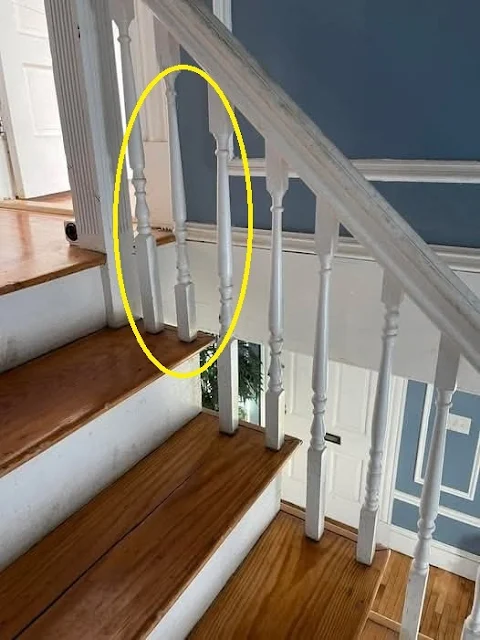The Curious Case of the Upside-Down Baluster: More Than Just a Mistake
Have you ever paused on a staircase, or perhaps admired a porch railing, and noticed a single baluster stubbornly pointing downwards, a lone rebel amidst its upright brethren? This seemingly insignificant detail might hold a surprisingly rich history, weaving together tales of craftsmanship, superstition, and even clandestine communication. Let’s delve into the intriguing possibilities behind this peculiar architectural quirk.
A Carpenter’s Secret Mark?
The Humble Signature of a Skilled Craftsman
In the world of woodworking, a craftsman’s mark isn’t always a grand flourish or a deeply carved monogram. Sometimes, it’s a subtle, almost hidden detail – a single inverted baluster. Think of it as the carpenter’s equivalent of an artist’s signature, a quiet testament to their skill subtly woven into the very fabric of the structure. This tradition, particularly prevalent in historic homes across New England and the Southern United States, speaks volumes about the pride and artistry of bygone eras. These inverted spindles, often overlooked, serve as silent whispers of the hands that built the home, a legacy etched in wood.
Ward Off Evil: A Superstitious Tradition
Protecting the Home from Unseen Threats
Beyond the realm of craftsmanship, the upside-down baluster often carries a hefty dose of folklore and superstition. In numerous cultures, inverted objects have been associated with warding off evil spirits or malevolent forces. The theory suggests that by inverting a baluster, one tricks malevolent entities into entering the home “upside down,” effectively trapping them or preventing them from causing harm. This belief, echoing across various traditions, speaks to a deep-seated human desire to protect oneself and one’s home from the unseen. This symbolic gesture transcends mere aesthetics, functioning as a charm, a silent guardian against spiritual threats.
Keeping Witches at Bay: European Folklore
The protective power of the inverted baluster extends to another fascinating area: the lore surrounding witches. In some European traditions, an upside-down spindle was believed to prevent witches from settling on the property. This belief, deeply rooted in ancient fears, highlights the baluster’s role not only as a structural element but also as a symbolic barrier against supernatural forces. The seemingly simple act of inverting a single piece of wood becomes a powerful ritual, a silent safeguard against unseen dangers.

A Secret Path? The Underground Railroad Enigma
The Debate Surrounding a Hidden Signal
A more controversial theory surrounds the upside-down baluster and its potential connection to the Underground Railroad. While some speculate that an inverted spindle might have served as a secret signal, indicating a safe house for escaping slaves, this remains largely unsubstantiated. Historians generally point to more established markers, such as quilts and lanterns, as more reliable signals. While the romantic notion of a hidden code embedded in architectural details is compelling, it’s crucial to approach this claim with cautious consideration.
The Simple Truth: An Accidental Charm
Sometimes, It’s Just a Happy Accident
Finally, let’s not forget the most straightforward explanation: sometimes, an upside-down baluster is simply a mistake. A minor oversight in construction that, rather than being corrected, remained a quirky, charming imperfection. The homeowners, perhaps embracing the unexpected, decided to leave the unique detail in place, adding a touch of whimsy and a silent story to their home. This accidental charm underscores the idea that even imperfections can lend a unique character to a space.
Spotting the Intentional from the Accidental
Determining whether an inverted baluster is intentional or accidental is difficult, often requiring careful consideration of the overall context. Look for patterns or consistencies in other architectural details. Is the inverted baluster the only one, or are others similarly placed? Knowing the history of the building and the craftsmanship of its era can provide valuable clues. Ultimately, the story behind each upside-down baluster remains a fascinating puzzle, a unique narrative embedded in the seemingly ordinary.




